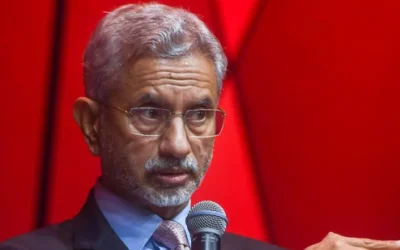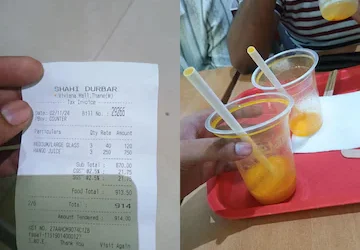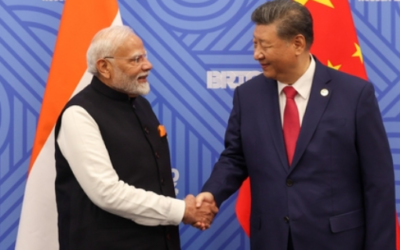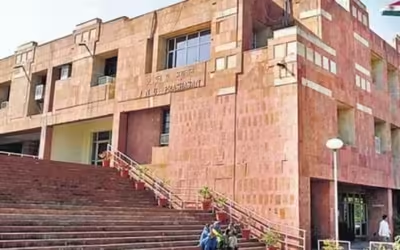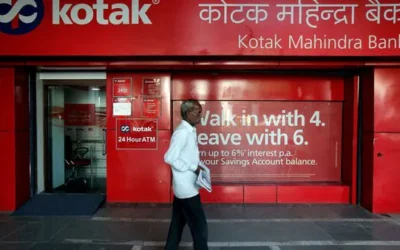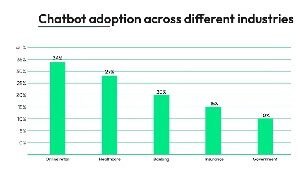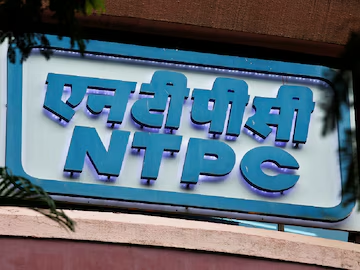The landscape of digital transactions and financial identity risks is rapidly changing, as highlighted by Joy Sekhri from Mastercard, who illustrates this with instances of Account Takeover fraud.
In India’s digital transaction landscape, a variety of methods and modes are fueling momentum. From UPI transactions through bank accounts or RuPay cards to utilizing credit cards, debit cards, tapping to pay with an Android phone or smartwatch, and scanning QR codes, the options are abundant. This ecosystem has seen significant growth, with 78.97 billion UPI transactions in the first half of 2024 marking a 52% year-on-year increase. Concurrently, 3.73 billion card transactions were recorded during the same period. However, the downside is the heightened interest of cybercriminals in exploiting these higher transaction volumes, posing a potential threat to your finances.
Banks, payment platforms, and credit card networks must prioritize transaction security. Mastercard, a prominent global card network among the top five, including Visa, American Express, Diners Club, and RuPay, is actively assisting financial institutions, payment gateways, enterprises, and consumers by implementing various transaction and card security protocols. According to the company, digital banking fraud amounted to $9.8 billion in 2023, with projections indicating a significant increase to $24.8 billion by 2028.
In 2023, fraudulent money transactions amounted to $5.5 billion. By 2028, this figure is projected to skyrocket to $12.6 billion. Combatting this surge are innovative behavioral solutions equipped with various models and algorithms to detect bots, scrutinize user activities, and promptly recognize suspicious card transactions. Have you heard about the alarming rise of Account Takeover (ATO) fraud and the deceptive pig-butchering scam? It’s definitely a cause for concern.
Mastercard utilizes generative artificial intelligence (AI) not only to enhance its defense mechanisms but also to combat the rising threat of advanced phishing attacks. Joy Sekhri, the Vice President of Cyber & Intelligence solutions, South Asia at Mastercard, highlights that the company leverages AI-driven tools like Decision Intelligence to analyze a staggering 112 billion transactions every year. This enables Mastercard to deliver instantaneous authorization and fraud prevention services to its clientele.
Mastercard recently launched a cutting-edge Tech Hub in Pune, marking a significant milestone in the enhancement of the company’s global tech infrastructure. Housing more than 6,000 technologists and engineers, this facility stands as Mastercard’s largest workforce concentration in any city worldwide.
HT interviews Sekhri from Mastercard to explore the rapidly changing payments environment in India, the increasing sophistication and speed of fraud, the significance of implementing various security measures, and the deployment of artificial intelligence for enhancing defense mechanisms. Abridged portions of the conversation have been included.
Analyzing the evolving digital payments ecosystem in India, with a focus on the varying proportions of card payments and UPI transactions, presents an intriguing perspective.
India’s digital payments sphere has experienced a significant evolution under the leadership of Joy Sekhri, witnessing a substantial increase in transaction volumes over the past decade. From 2,071 crore digital transactions in FY 2017-18, the country has recorded a remarkable surge to 18,737 crore in FY 2023-24. This growth can be attributed to advancements in technology and evolving consumer behaviors. Factors like the widespread adoption of smartphones, affordable internet access, and improved digital literacy have played a crucial role in driving this transition, extending the advantages of digital payments even to rural populations.
Amidst this ever-changing environment, a diverse array of payment methods have surfaced, presenting consumers with a wide range of choices. These options encompass payments made through cards, real-time transactions, QR codes, as well as cash. It is crucial to prioritize the seamless operation, safety, and convenience of digital transactions to enable universal access and reliability for individuals worldwide. Looking at the present trajectory, India seems poised to lead the way in the worldwide digital payment transformation, nurturing enhanced financial participation and advancement for businesses and societies alike.
Are we facing unprecedented levels of risk in the realm of online fraud today? How can we showcase innovative and distinctive approaches that specifically aim at online banking and digital payment users in India and globally?
[Rephrased Content]: JavaScript: In the era of extensive digitization across various industries, the threat of online fraud is undeniably on the rise. As the volume of online transactions continues to surge, cyber attackers are utilizing increasingly advanced methods to capitalize on weaknesses, impacting not just in India but globally as well.
One prevalent strategy in use involves Account Takeover (ATO) fraud, in which perpetrators employ techniques like credential stuffing and phishing to illicitly obtain entry to user accounts. In this context, a user’s login details — frequently acquired from prior data breaches, are leveraged to breach accounts. Subsequently, this information is misused to conduct unauthorized transactions, impacting industries like e-commerce and digital products that face specific vulnerabilities in verifying transactions.
Scammers are adopting a new tactic known as the pig-butchering scam, gaining victims’ trust gradually until persuading them to transfer significant funds. This evolving fraudulent approach poses risks not only to sectors like healthcare but also to the misuse of sensitive patient data for identity theft and fake billing within the industry.
To prevent fraud, organizations are increasingly recognizing the significance of implementing advanced technologies such as artificial intelligence (AI), machine learning (ML), and behavioral analysis for detecting anomalies.
Ensuring transaction security is a top priority for Mastercard. How do they maintain this security, and why is continuously enhancing technology crucial in this regard?
Mastercard utilizes a comprehensive set of security measures to safeguard transactions across its network in JavaScript. Leveraging cutting-edge technologies like Decision Intelligence driven by AI, Mastercard scrutinizes more than 112 billion transactions every year. By offering instantaneous authorization and fraud identification, this system not only averts substantial financial losses but also enables the swift identification of compromised devices and irregular behavior.
Indeed, Mastercard goes the extra mile by not only securing transactions but also spearheading innovative strategies to ensure the safety of a dynamic ecosystem that encompasses physical, digital, and metaverse realms, along with all interfaces in between. Mastercard’s security strategy empowers its clients and collaborators with enhanced insights into cybersecurity threats, improved flexibility and durability, fortifies their infrastructure with cutting-edge AI solutions, and provides reassurance to the individuals and enterprises under its care.
Can Generative AI offer assistance in proactively addressing threats to prevent them from impacting unaware users?
Generative AI is now a potent asset in cybersecurity, proving invaluable in proactively identifying and mitigating threats to safeguard users. Its key role lies in boosting threat detection accuracy through comprehensive data analysis, establishing a benchmark for typical behavior. This forward-thinking strategy excels in uncovering advanced cyber threats that traditional security measures may overlook.
GenAI not only enhances threat detection but also automates security responses. It continuously learns and adjusts to new attack patterns, guaranteeing that defense mechanisms develop in real-time. This adaptive feature positions AI as a crucial component of contemporary security systems, enabling organizations to effectively address evolving threats.
AI has advanced considerably within the realm of financial services, bolstering security measures and empowering financial entities to promptly identify and probe dubious transactions. This capability offers a crucial shield for both businesses and their clientele. Furthermore, by replicating diverse financial scenarios, this technology enables organizations to assess the potential consequences of various risk elements and devise corresponding risk-mitigation strategies.
JS: Security measures are triggered to safeguard the payment process when a user starts a transaction, be it online or offline. With a strong focus on security, multi-factor authentication (MFA) stands out as it necessitates users to furnish two or more verification factors before proceeding with their account access or transaction finalization. The Reserve Bank of India (RBI) has stressed the significance of moving away from conventional OTPs to more robust authentication methods, highlighting the role of services like Mastercard’s Payment Passkey Service in enhancing security.
Mastercard’s Payment Passkey Service was first introduced in India as a trial run, marking a noteworthy progression in transaction security by substituting conventional passwords and OTPs with biometric verification techniques like fingerprint scans or facial recognition. The primary goal of this service is to simplify the online shopping experience and bolster protection against fraudulent activities and scams. Incorporating tokenization adds an extra layer of security by safeguarding the cardholder’s confidential data from being disclosed to external entities.
Users have the option to amplify their transaction security beyond the existing safeguards by implementing a few proactive measures. It is beneficial to frequently update passwords and activate MFA on all eligible accounts as a primary step. Additionally, users should regularly review their financial statements to detect any unauthorized transactions and opt for virtual card numbers for online transactions when feasible.
Would Mastercard have a distinct role in assisting banks, payment systems, and ecosystem participants?
Mastercard contributes significantly to the banking sector, payment systems, and ecosystem stakeholders by providing solutions that boost security, operational efficiency, and customer satisfaction. By working closely with financial institutions, Mastercard customizes its offerings to address their distinct requirements. This cooperative strategy enables banks and other financial entities to optimize processes, deliver enhanced services, and drive progress and competitiveness within the dynamic digital environment.
Mastercard plays a significant role in enhancing cybersecurity and preventing fraud within the financial industry. Their innovative solutions, such as RiskRecon and Brighterion, demonstrate the company’s dedication to assisting financial institutions and payment processors in bolstering their security measures. RiskRecon offers timely information on cybersecurity weaknesses, enabling organizations to detect and mitigate risks proactively. Concurrently, Brighterion utilizes artificial intelligence to promptly identify fraudulent activities. Through scrutinizing transaction details and pinpointing irregularities, Brighterion guarantees safe transactions with minimal false alerts, empowering institutions to safeguard their clients from fraud and cybersecurity risks effectively.
Mastercard’s Mastercard ID Theft Protection service provides consumers with a direct shield against identity theft. This all-encompassing service is crafted to protect personal data by actively scanning the deep, dark, and surface web for any compromised information like passports, bank accounts, credit cards, email addresses, and more.





































